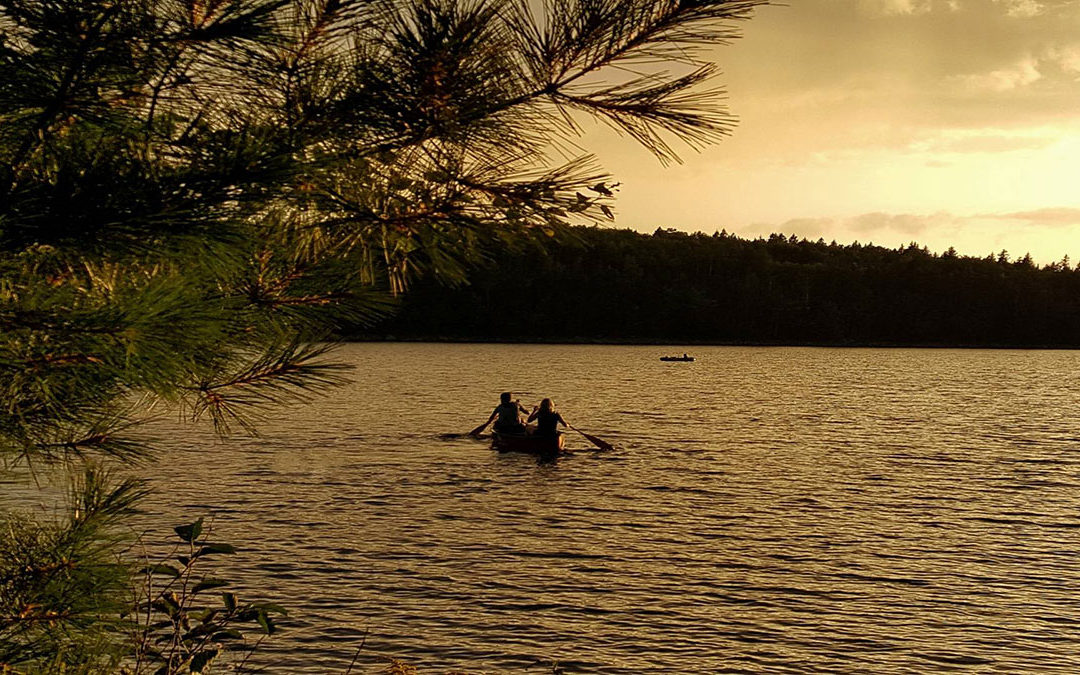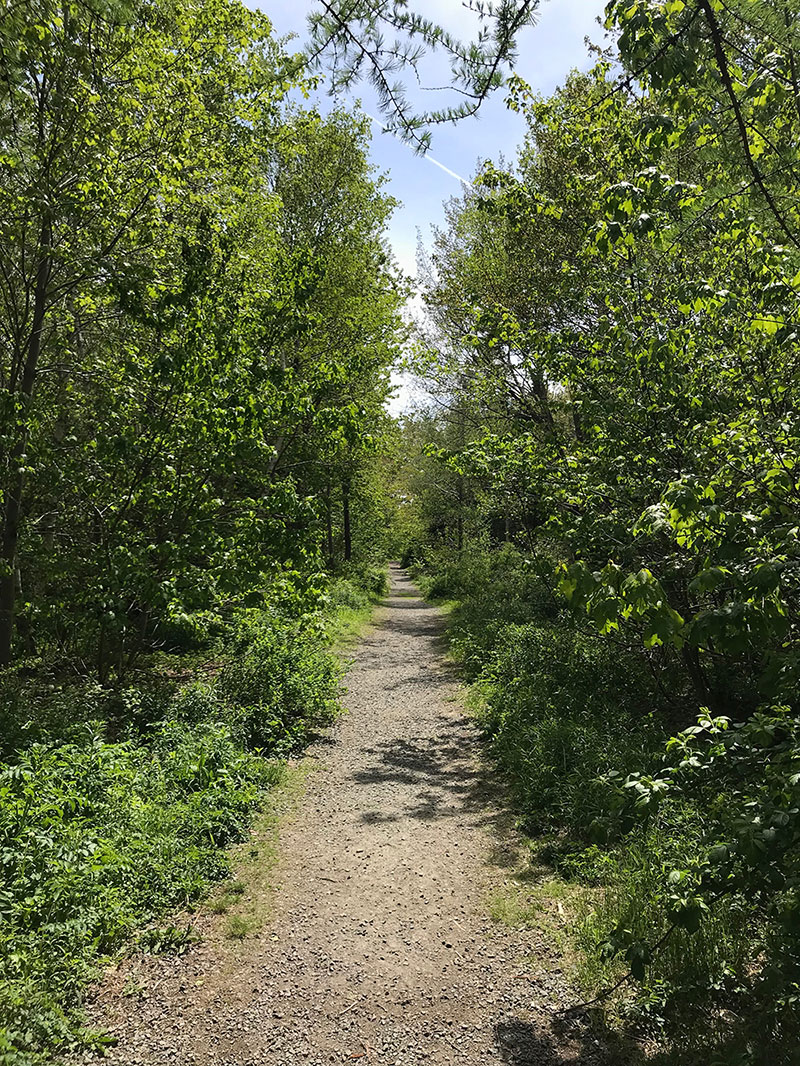May has come and gone, and in Halifax that means spring is well underway! The grass has been green for weeks. Right now, all the hardwoods are beginning to look green, many are in full blossom. The colour of the forest floor has changed from a carpet of warm beige brown dry pine needles to the bright green of new growth. The thick coverage of a new canopy means that noise from outside Long Lake Provincial Park only creeps in for a few meters around it’s suburban borders. Once inside, where only a few weeks ago, visitors could see for meters through the leafless forest, the view is transformed. Now, squirrels, robins, and Blue jays sit on green branches at the edge of the trail. This park is only 10 minutes from Downtown Halifax, and people love to throw around the term “urban wilderness”. But make no mistake, this is no urban wilderness, this is real wilderness. The Lakeview trail sits at the northernmost point of the 5000-acre park. From there, the park stretches south across the Chebucto Peninsula almost half way to the coast of the Altantic Ocean (photo 1). So why all this talk of the park when we’ve discussed it previously at length? Well, this month, the blog will cover the changes that spring brings to Long Lake Village and look into the possible health benefits that come with living so close to the forest.
If you think about it, the correlation between living closer to nature and being healthier seems pretty obvious. If you google it, there is no shortage of articles and news stories about “the benefits of living closer to nature”. Why is this? Why might living in or around forests, lakes etc make people happier and healthier? Well, if you want to get technical, Dr. Simone Kuhn of the University of Leipzig writes that “Research on brain plasticity supports the assumption that the environment can shape brain structure and function”. But for those of us who don’t have four degrees from three different universities there must be some more simple answers.
In one study, Kuhn and her team looked at 341 adults aged 61 to 82. Participants completed memory and recognition tests and underwent an MRI to determine the health of areas of the brain that process stress. Researchers then combined the test and MRI data and cross referenced it with the geoinformation of participants. This helped the researchers learn about the influence of place of residence on specific parts of the brain. Data from the study showed that urban dwellers who lived close to a forest were more likely to have a strong amygdala structure (the amygdala is the part of the brain that deals with stress). It’s important to note that the study did not confirm whether living next to a forest made people’s brains healthier, or if people with healthier brains chose to live close to forests (haha). However, the paper did suggest that the data pointed heavily to the former.
All of this leaves us with one main question, why? What is it about living next to the forest that could cause people to not only live a more active lifestyle, but also be noticeably healthier than others (photo 2)? Who knows, maybe something about forest trails makes people more eager to get out and go for regular runs or bike rides, swimming has been proven to be healthy for the body, and in Long Lake Village, that can be done on every summer morning. There is no shortage of correlations between physical exercise and mental health. Maybe that’s what this all boils down to; people who live somewhere where they have these incredible opportunities to get outside and exercise every day are more likely to do so. This in turn leads to better physical and mental health. Perhaps it has something to do with being able to unwind and just run without having to worry about stopping to avoid traffic or swerving around pedestrians on a crowded sidewalk. Or maybe something about being in the woods just speaks to us on a primal level and checks some boxes buried deep down in our DNA. One thing is for sure, for many of us, there are few feelings as calming and fulfilling as getting into the great outdoors and connecting with nature as often as possible. In Long Lake Village, no matter the weather or time of year, that is always an potion.


